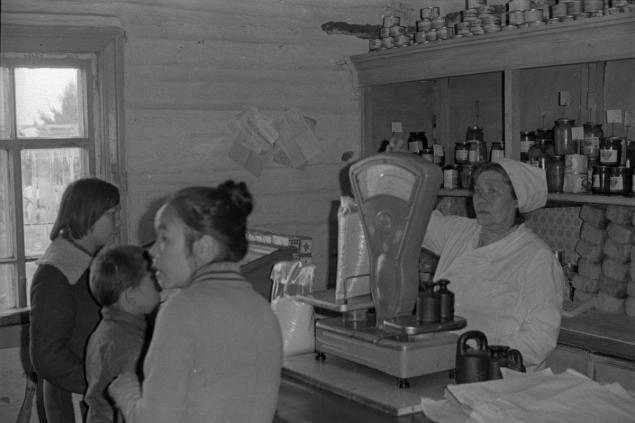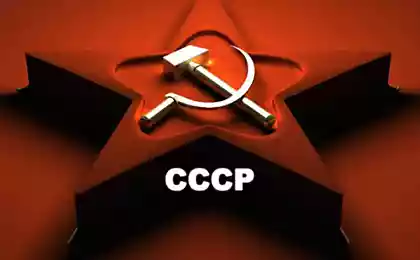156
Why the price of all Soviet goods was knocked out and no one was questioned
Many of the things created during the Soviet era are still stored in our homes. And if you look closely, you can see the printed or even knocked out price. Today, when we only dream of a stable price level, this practice raises a lot of questions. Let's try to find the answers.
193662.
In the planned economy of the Soviet Union, prices were set and regulated by the state. They have rarely risen (as in 1962). For example, vegetable oil cost 1 ruble 70 kopecks in 1965, 1970, and 1979.

Therefore, manufacturers boldly indicated the price on the product itself or on its packaging. The buyer could not doubt that the item is not more expensive than its official value. And sellers did not have to bother writing price tags every time.

Food packaging prices were indicated for another reason. The fact is that in the USSR there were three so-called “price belts”. The first belt included Moscow, Leningrad and the capitals of the Union republics. To the third - the regions of the Far North and the Far East, and to the second - the rest of the territory of the USSR.

Within each of them, prices were uniform, but differed significantly from belt to belt. Therefore, additional information was not superfluous.
The Law of Supply and Demand Stable Over the Years – Is It Good or Bad? At first glance, good. Indeed, in the USSR, people knew exactly what to focus on. They could confidently plan their upcoming purchases.

It showed up even in small things. In 1979, my mother sent me to supermarkets with one ruble and could write down to a penny what I should buy. Today I give my son 150 rubles for milk and bread and I am not sure that this will be enough. After all, prices for the same product can vary significantly even in neighboring stores.
View this post on Instagram
Posted by First Nostalgic (@nostalgiaruss)
On the other hand, the law of supply and demand continues to work even though society is building communism. According to him, the price is set at the equilibrium point between supply and demand. If the state sets artificially low prices, demand rises and increases to the point where supply can no longer cover it.

In the USSR, this led to a shortage of goods, in which people had money, but they simply could not buy what they wanted. To purchase scarce goods, which often appeared on the shelves suddenly, the Soviet people had to stand for many hours. When deficits became particularly acute, rationed distributions (as in the late 1980s) were introduced.
“Guys, keep your money in the savings box!” The stability of prices formed certain habits among the Soviet people. Unlike today’s customers, our grandparents hardly used credit. Money for expensive purchases was saved.
View this post on Instagram
Publication by Ksenia Voropaeva (@voropaeva889)
And since the purchase of currency was prohibited, it remained to use the advice of the charming crook Georges Miloslavsky and keep the blood in the savings bank. All this played a cruel joke with the citizens of the USSR in the 90s, when the savings earned for a lifetime for many simply “burned out” at once. Perhaps that is why today we prefer to keep money under the mattress and look with such surprise at rare Soviet goods, which became a vivid reminder of a bygone era of stable prices.
The article and the preview used photos.
193662.
In the planned economy of the Soviet Union, prices were set and regulated by the state. They have rarely risen (as in 1962). For example, vegetable oil cost 1 ruble 70 kopecks in 1965, 1970, and 1979.

Therefore, manufacturers boldly indicated the price on the product itself or on its packaging. The buyer could not doubt that the item is not more expensive than its official value. And sellers did not have to bother writing price tags every time.

Food packaging prices were indicated for another reason. The fact is that in the USSR there were three so-called “price belts”. The first belt included Moscow, Leningrad and the capitals of the Union republics. To the third - the regions of the Far North and the Far East, and to the second - the rest of the territory of the USSR.

Within each of them, prices were uniform, but differed significantly from belt to belt. Therefore, additional information was not superfluous.
The Law of Supply and Demand Stable Over the Years – Is It Good or Bad? At first glance, good. Indeed, in the USSR, people knew exactly what to focus on. They could confidently plan their upcoming purchases.

It showed up even in small things. In 1979, my mother sent me to supermarkets with one ruble and could write down to a penny what I should buy. Today I give my son 150 rubles for milk and bread and I am not sure that this will be enough. After all, prices for the same product can vary significantly even in neighboring stores.
View this post on Instagram
Posted by First Nostalgic (@nostalgiaruss)
On the other hand, the law of supply and demand continues to work even though society is building communism. According to him, the price is set at the equilibrium point between supply and demand. If the state sets artificially low prices, demand rises and increases to the point where supply can no longer cover it.

In the USSR, this led to a shortage of goods, in which people had money, but they simply could not buy what they wanted. To purchase scarce goods, which often appeared on the shelves suddenly, the Soviet people had to stand for many hours. When deficits became particularly acute, rationed distributions (as in the late 1980s) were introduced.
“Guys, keep your money in the savings box!” The stability of prices formed certain habits among the Soviet people. Unlike today’s customers, our grandparents hardly used credit. Money for expensive purchases was saved.
View this post on Instagram
Publication by Ksenia Voropaeva (@voropaeva889)
And since the purchase of currency was prohibited, it remained to use the advice of the charming crook Georges Miloslavsky and keep the blood in the savings bank. All this played a cruel joke with the citizens of the USSR in the 90s, when the savings earned for a lifetime for many simply “burned out” at once. Perhaps that is why today we prefer to keep money under the mattress and look with such surprise at rare Soviet goods, which became a vivid reminder of a bygone era of stable prices.
The article and the preview used photos.
I came to see my father, inserted the key, but I could not open it, someone changed the locks.
The children received the sad news that their mother was no more, but they did not become sad, rushed to share the inheritance, they were waiting for a surprise.























